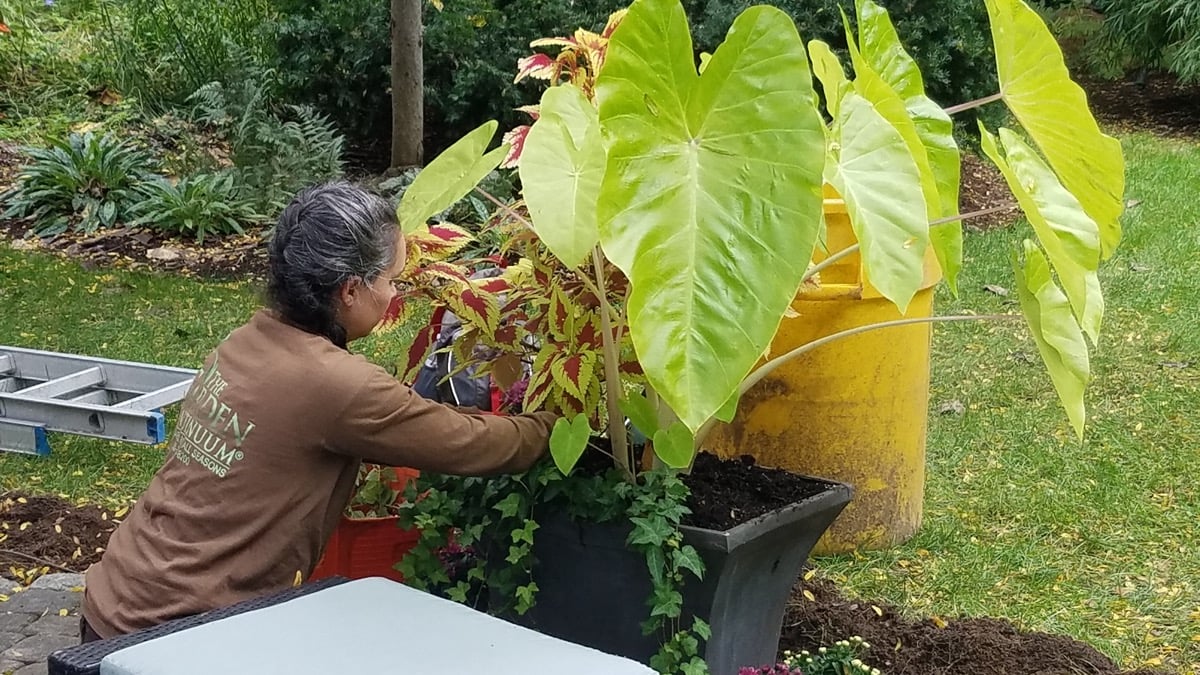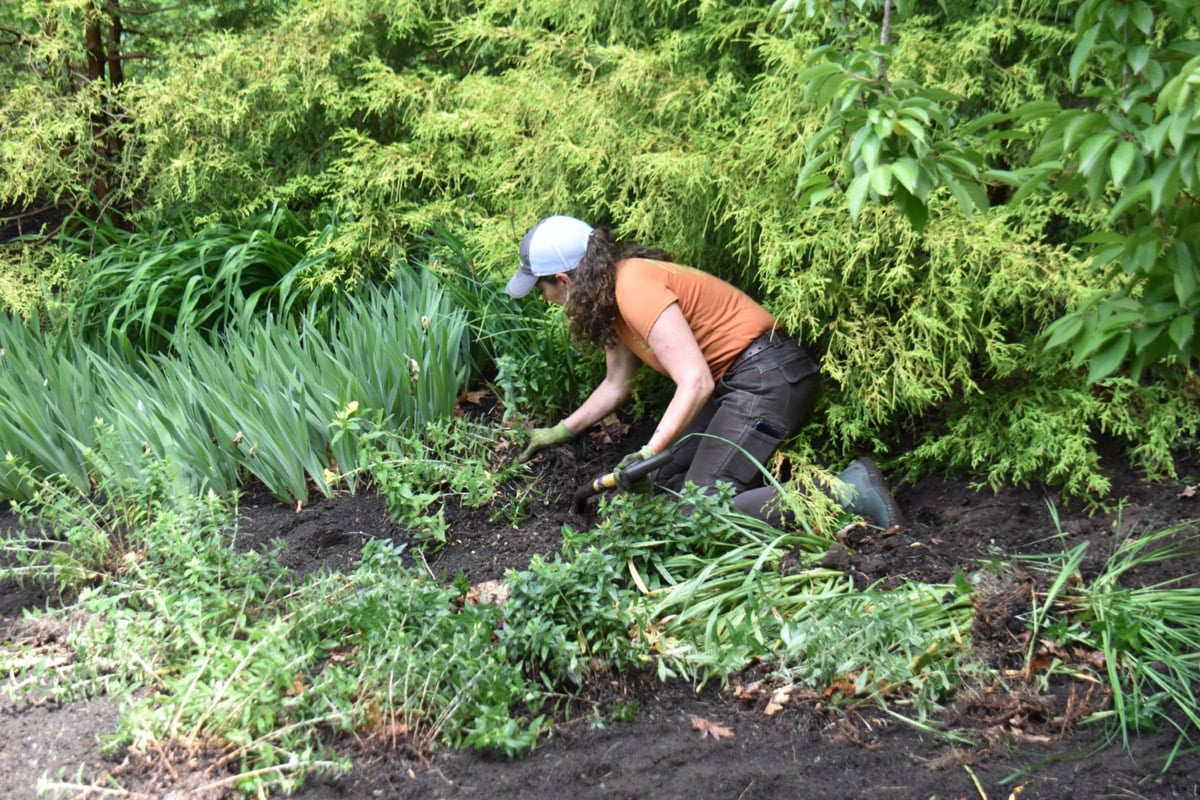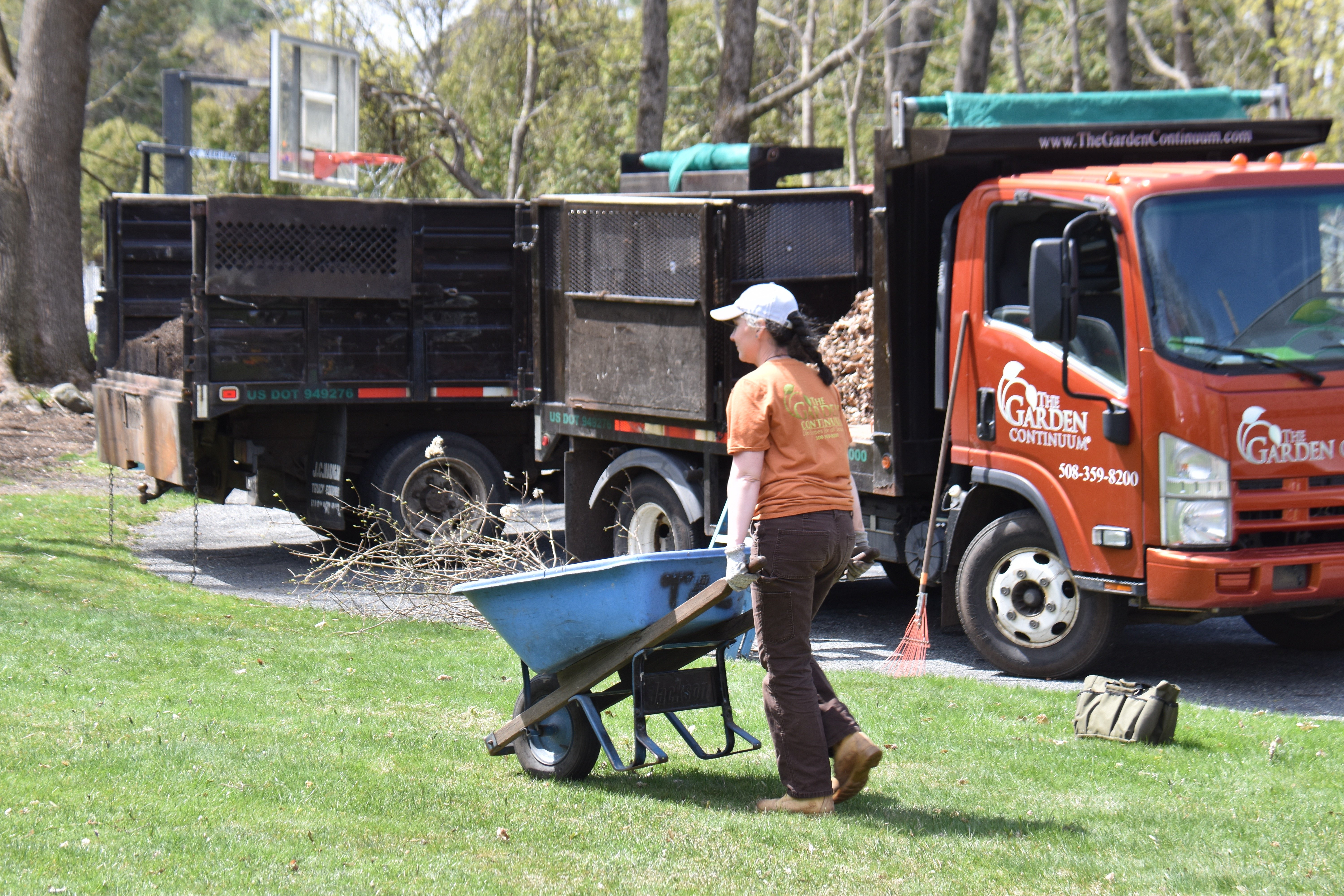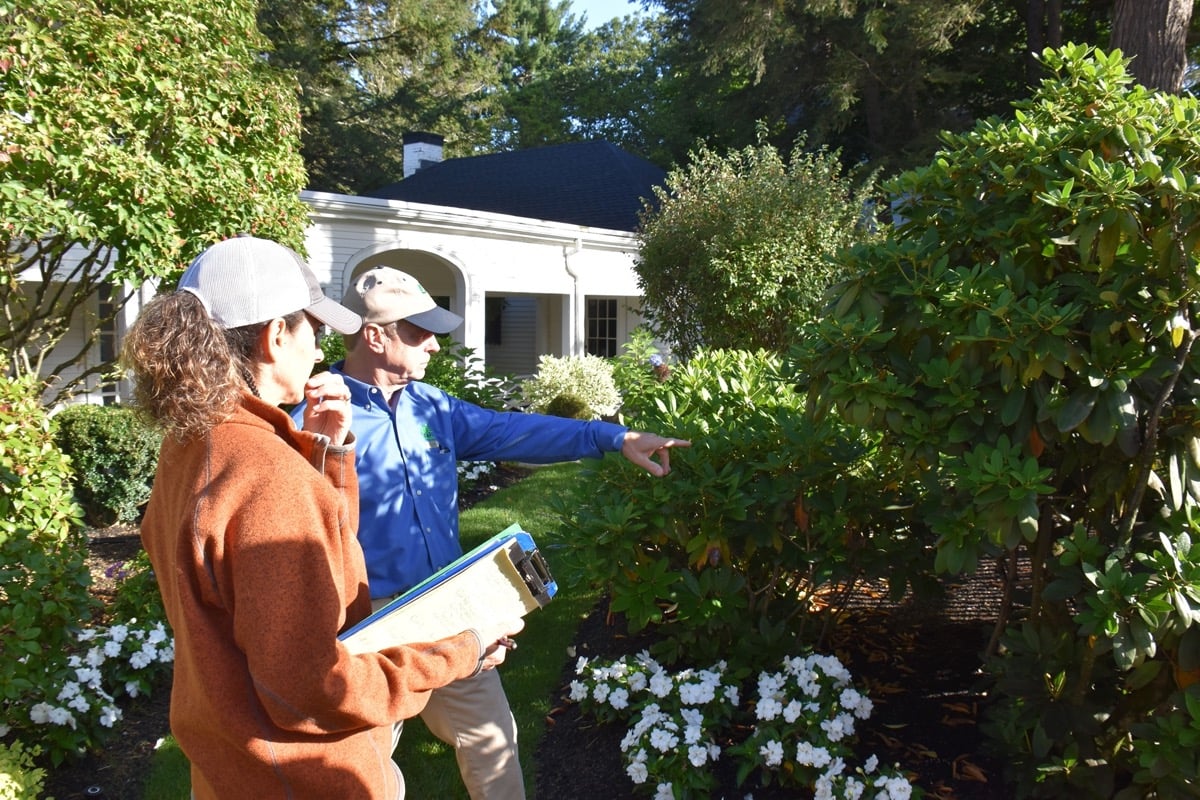It’s an inevitable cycle. Despite even the most thorough fall cleanups, there’s always yard work to do in the spring. So, as the days grow longer and the desire to ditch the cozy blanket for sunglasses becomes stronger, homeowners may be feeling mixed emotions.
On the one hand, they’re excited about the floral explosions and outdoor gatherings that await them. On the other hand, this year’s winter damage may have them feeling dread and overwhelm.
And, this two-headed green monster isn’t going to disappear overnight. It’s going to take some effort, but if you tackle your to-do list like a pro, there’s no reason you won’t be hosting that patio brunch in time for Mother’s Day.
Assess Your Landscape Like a Pro: Tips and Tools for Evaluating Your Garden's Potential
The first step of assessing your landscape like a professional gardener is to take the emotion out of it. Instead, look at your spring cleanup as a sense of responsibility to the land and the natural system itself. Once you make that shift, it will be easier for you to accomplish your goals.
With your new perspective in mind, it’s time to grab a clipboard, a pen and take a walk around your property. Monique suggests asking three questions during this exploration phase:
- What needs to be repaired or removed?
- What needs to be supported or guided?
- Is there an opportunity to build or enhance?
To simplify the assessment even further, Monique likes to break down the landscape into five main layers or niches. These layers will help uncover the work needed to clean up your outdoor space so you can make an approachable DIY schedule and start delegating the projects you’ll need help with.
Here’s a quick overview of each layer. We encourage you to read our previous post titled, “Understand your landscape by breaking it down into layers” for more information.

Sky Niche: First, look up! What do you see? Tall trees like pine, birch and maple live up here. Are there any hazards like widow makers that could potentially fall and hurt someone? Are any major limbs broken? Remember, the larger the limb, the harder it might be for the tree to recover. How big are the wounds? The larger the wound, the more vulnerable the tree will be to disease and pests. If the answer to any of these questions is yes, it’s time to call a licensed arborist. Work in this space is very dangerous and should be left to trained professionals.
Understory Niche: Next, shift your gaze downward a bit. This is where your flower, fruit-bearing and young evergreens live. Similar to the sky niche, you may notice breaks and opportunities to prune and shape. If you’re not experienced however, work in this space is also best left to the professionals.
An example of a DIY task from this niche is to support young trees. If you see a tree leaning in one direction or if branches are touching the ground, spring is a good time to add support. It’s important to add support before the blooms appear because they will add additional weight to the branches. Making sure all branches are off the ground will minimize bacteria spread.
Middle-story Niche: Practically any shrub you can think of belongs in this category. This is where your hydrangeas, azaleas, and rhododendrons live. Oftentimes, these plants are highly visible. And, this makes them easy targets for rogue landscapers with hedge trimmers. Early spring is a great time to take stock and determine whether or not the plant has outgrown its space and needs to be transplanted or if it's better served by a spring prune. If it’s the latter, and you feel confident, you could start by removing all dead branches, diseased branches and crossing branches.
Ground Niche: This niche is ever-evolving and it’s a perfect place for the amateur gardener to experiment and grow. It’s also a great place to highlight your artistic sense by playing with design, colors and textures.
If it’s early spring, there’s probably not much to see here right now except for maybe some crocus, snowdrops and hellebore. But, if you’re thinking like a pro, you’ve probably documented your garden throughout the seasons with pictures and written descriptions so you know which perennials and bulbs will emerge and where.
If you’re new to a property or haven’t yet started documenting your gardens, one great thing about working with a professional in this niche early on in the season is that they can use their expertise to identify plants when they’ve barely come to the surface.
Soil Niche: When you observe this layer, you should be asking yourself whether or not it’s time to spread a new layer of mulch, remove existing mulch, install ground cover or amend the soil. You should also determine whether there's been any erosion or drainage issues over the winter. If you’re concerned about soil health, drainage, erosion or compaction, partnering with a landscape professional trained in soil management is recommended.

Putting it all together: A complete spring gardening checklist
Keeping Monique’s tips in mind, here’s a sample checklist for the spring of 2023. It’s important to remember, all yards are not created equal and each homeowner will have different goals, but this list will give you a general idea of which spring tasks will help you reach backyard bliss.
March & April
- Start seeds Inside: Start in March so they have enough time to develop before transplanting them outside.
- Get on the list: Call a certified arborist or landscape professional and get on their schedule. It’s important to call early. You’ll likely be placed on their waitlist.
- Plan your perennial and vegetable gardens: Decide what you want to grow and where you want to grow it. Observe sunlight, soil quality and spacing requirements before planting.
- Take a soil sample: Test soil pH to determine whether it’s too acidic or alkaline. Adjust the pH if necessary. Take stock of the macro and micro nutrients and organic matter present and make plans for supplemental minerals or compost if needed.
- Take inventory and perform tool maintenance: Tools last longer when well cared for. Schedule a lawn mower tune-up. Clean and sharpen your pruning shears. Sharp tools make better cuts and clean tools help prevent the spread of diseases.
- Take care of frost heaving perennials: Temperature fluctuations mixed with bare soil can lift your perennials right out of the ground. It's called frost heaving. If you can do so without damaging the root system, carefully push the plants back into the ground. Then cover them with mulch or compost to prevent further upheavals.
- Pick up sticks: This one’s pretty obvious.
- Wash away road salt: Once temperatures are above freezing, rinse all trees and garden beds near salted roads, driveways and paths. Flush the salt out of the soil by thoroughly rinsing.
- Clean up garden beds: Remove debris or dead plant material to help prevent disease and pests. It’s important to note that you should avoid working in the garden when the soil is wet and muddy. Doing so can damage soil and plants.
- Re-establish boundaries: Spring is the perfect time for edging. The objective is to re-define garden beds to prevent the lawn from encroaching. This simple step will set the tone for the rest of the growing season and ensure your yard looks sharp and organized.
- Support garden plants such as peonies: Rebar or tomato cages work really well.
- Sow cold hardy crops: Think peas, beans, beets, arugula.
- Weed beds: Pull weeds and bramble bushes early in the month when soil is still moist.
- Add some color: Plant pansies in April and other cold tolerant annuals.
- Divide and plant perennials: Early spring is a great time to divide most perennials. This allows the transplants to establish their roots before the dog days of summer set in. Here are some tips for dividing day lillies and Siberian irises.

May
- Prepare soil: Loosen the soil and add compost or mulch to improve soil quality and drainage.
- Plant transplants: Once the danger of frost has past, plant transplants into their garden beds. Check your plant hardiness zone for specific frost free dates for your area.
- Mulch garden beds: A 1 to 3 inch layer of mulch helps prevent weeds and retain moisture. Too mulch can be hazardous to your plants and trees. If you have too much mulch in an area, it’s recommended to remove the mulch and start with a fresh layer. We’ll talk more about mulch in an upcoming spring blog.
- More weeding.
- Prune or deadhead. As soon as the flowers have faded, it’s time to prune or deadhead blooming shrubs like lilacs, rhododendrons, forsythias and viburnums. Timing is critical. If you wait too long, you’ll shear off the buds for next year.
- Deadhead bulbs. Leave foliage intact until it turns yellow and falls over.
- Plant spring flower boxes, flower pots: Now is the time to take a trip to the nursery and purchase annuals for your boxes and pots. It’s best to set a budget and have a plan before you go because these projects can get expensive quickly. The most important thing is to have fun!
- Add new trees and shrubs: If you’ve been thinking about adding more shrubs or trees to your landscape, now is the time to do it. Planting shrubs and trees in spring will give them the right conditions and plenty of time to establish themselves so they can grow throughout the summer.
- Observe: The power of observation and taking notes is key to having a successful garden. Don’t forget to carve out time to sit quietly and learn from your plants. Do you see signs of pests? Are your plants thriving or would they do better in another spot? Are your garden beds retaining moisture or is the water running off? Observing allows you to detect potential problems and address them early.
If you’re not yet confident in creating a task list and completing projects on your own, a great next step might be to hire a garden consultant. Consultants will oftentimes walk through the property with you and provide advice on how to tackle projects yourself. If you want to dig a little deeper, master gardener associations and garden clubs are also excellent resources.
Spring gardening is important because it sets the tone for the rest of the growing season. We hope these tips help you stay on track and eliminate some of the overwhelm you might be feeling. Remember, gardening should be fun!
If you are interested in regenerative gardening, please download our eBook: How Regenerative Gardening will help Fight Climate Change.

If you are in our service area and interested in improving your landscape, please feel free to sign up for our landscape discovery session.








Leave a comment